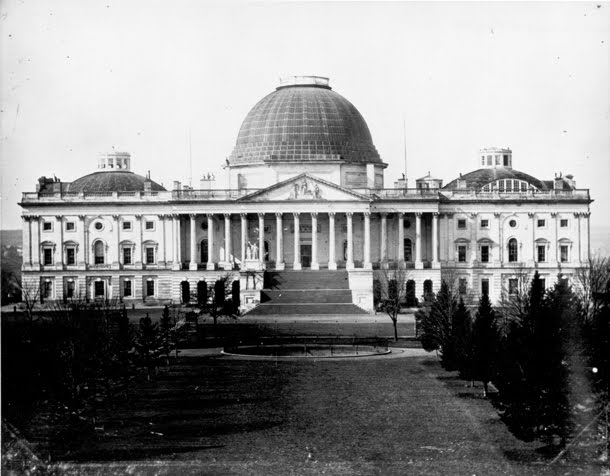From The Washington Times and The CATO Institute:
Abolish State Income Taxes
by Richard W. Rahn
Richard W. Rahn is a senior fellow at the Cato Institute and chairman of the Institute for Global Economic Growth.
Added to cato.org on July 20, 2010
This article appeared in The Washington Times on July 19, 2010.
PRINT PAGE CITE THIS Sans Serif Serif Share with your friends:
ShareThisDid you know there are nine states that have no state income tax? The non-income-tax states (see accompanying chart) are geographically and economically diverse, ranging from the state of Washington in the Pacific Northwest, to Texas and Florida in the South, and up to New Hampshire in the Northeast.
Why is it that some of the states with the biggest fiscal problems have the highest individual state income tax rates, such as New York and California, while some of the states with the least fiscal problems have no state income tax at all? High-tax advocates will argue that the high-tax states provide much more and better state services, but the empirical evidence does not support the assertion. On average, schools, health and safety, roads, etc. are no better in states with income taxes than those without income taxes. More importantly, the evidence is very strong that people are moving from high-tax states to lower-tax-rate states — the migration from California to Texas and from New York to Florida being prime examples. (Next year, the combined federal, state and local income tax rate for a citizen of New York City will be well over 50 percent, as contrasted with approximately 38 percent for citizens of Texas and Florida.) If the citizens of California and New York really thought they were getting their money's worth for all of the extra state taxation, they would not be moving to low-tax states.
The obvious question then is: Where is all the extra money from these state income taxes going? It is going primarily to service debt, and to pay for inflated salaries and employee benefits. It is interesting that the high-tax-rate states also, on average, have much higher per capita debt levels than states without income taxes. (Alaska is an outlier because it has its oil reserve to borrow against and actually gives its citizens a "dividend" each year.)
The state of New York is a poster child for what not to do.
The biggest additional burden the high-tax states have is unionized government worker contracts. My Cato colleague Chris Edwards notes: "Half of all state and local spending — $1.1 trillion out of $2.2 trillion in 2008 — goes toward employee wages and benefits." His study showed that, on average, total hourly compensation for state and local government workers was 45 percent higher than for equivalent private-sector workers. In addition, the government workers are rarely fired — even those with poor job performance. Importantly, the differential was much greater in states where more than half of the state employees were unionized, and these were all in states with state income taxes, with the exception of Washington. High rates of unionization of public employees and high rates of debt go hand in hand. Those states whose government workers are less than 40 percent unionized have median per capita state debt of $2,238, while those states where unionization rates are over 60 percent have a median per capita state debt of $6,380. High rates of unionization tend to lead to excess staffing, unaffordable benefits and pensions.
There have been a number of both empirical and theoretical studies showing the negative impacts of state income taxes and particularly those with high marginal rates on economic growth within the state. A recent study published in the Cato Journal by professors Barry W. Poulson and Jules Gordon Kaplan, which was carefully controlled for the effects of regressivity, convergence and regional influences in isolating the effect of taxes on economic growth in the states concluded: "Jurisdictions that imposed an income tax to generate a given level of revenue experienced lower rates of economic growth relative to jurisdictions that relied on alternative taxes to generate the same revenue."
Richard W. Rahn is a senior fellow at the Cato Institute and chairman of the Institute for Global Economic Growth.
More by Richard W. RahnThe state of New York is a poster child for what not to do. At one time, it was the richest and most populous state. But at least going back to the Harriman and Rockefeller administrations decades ago, it decided it could tax and spend its way to prosperity. (Note: New York City residents face a maximum combined state and city income tax of over 12 percent, while those in many New York counties pay a little less than 9 percent, giving the state an average maximum tax rate of almost 11 percent.) The results have been the opposite of what was promised. New York's relative population, economic growth and per capita income have all declined, particularly in relation to those states without a state income tax. In the past year, per-person taxes have increased by $419 in New York, far higher than any other state. (Note: They went up only $1 in Texas. Is New York or Texas now better off?)
Income taxes, as contrasted with consumption (i.e., sales) taxes and modest property tax rates, are far more costly to administer and do far more economic damage (by discouraging work, saving and investment) and are far more intrusive on individual liberty. The states without state income taxes overall have had far better economic performance for most of the past several decades than have the income tax states — particularly those with high marginal taxes. The Tea Party movement indicates that it might be the right time politically for politicians in the income tax states to call for those taxes to be phased out. Good economics might actually be good politics this year.
Friday, July 23, 2010
Subscribe to:
Post Comments (Atom)
.gif)






























No comments:
Post a Comment